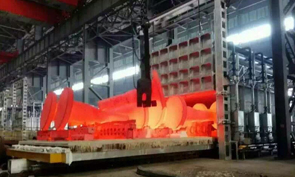Crystal structure of Metals
Jun.13,2017
From a manufacturing viewpoing,metals are the most important class of materials. Most often, they are the materials being processed and are used in the machines performing the processing. Consequently, in order to perform manufacturing operations intelligently,it is essential to have a basic knowledge of the fundamental nature of metals and their behavior when subjected to mechanical or thermal treatment.
More than 50 of the known chemical elements are classed as metals,and about 40 have commercial important. These materials characterized by a metallic bond and posses certain distinguishing charactristics:strength,good electrical and thermal conductivity,luster, the ability to be deformed permanently to a fair degree without fracturing, and a relatively high specific gravity, as compared with nonmetals. The fact that some metals possess properties different from the general characteristic simply expands their engineering utility.
When metals solidity by cooling, they assume a crystalline structure,that is,the atoms arrange themselves in a space lattice. Most metals exist in only one lattice form. A few,however,can exist in the solid state in two or more lattice forms, the particular form depending on the conditions of temperature and pressure. These metals as said to be allotropic, and the change from one lattice form to another is called an allotropic change. The most notable example of such metal is iron,where the property makes possible the use of heat-treating procedures to produce a wide range of charactreistics .It is largely due to its allotropy that iron is the base of our most important alloys.
Metals are known to solidify into 14 different crystal structures. However,nearly all of the important commercial metals solidify into one of three types of lattices, these being body-centered cubic,face-centered cubic, and hexagonal close-packed.


